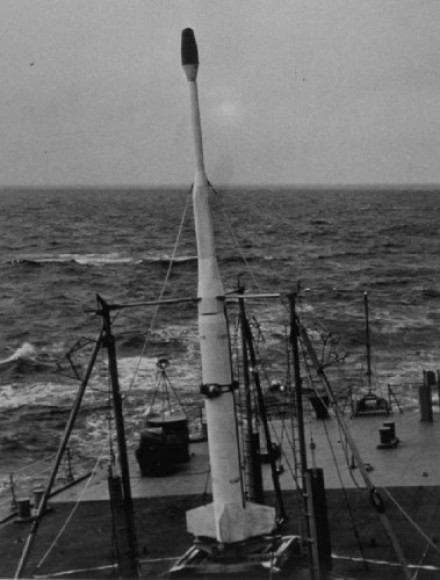Fifty-four years ago this month, the first of a trio of secret nuclear test shots was conducted from a remote location in the South Atlantic Ocean. These tests were conducted in support of a secret Defense Nuclear Agency program given the code name Operation Argus.
In early 1958, Nicholas Christofilos, a researcher at Lawrence Radiation Laboratory (LRL) theorized that artificial radiation belts could be produced through detonation of a nuclear device in space. These belts would be the result of charged particles becoming trapped within the magnetic field that surrounds the Earth.
Christofilos posited that the artificial radiation belts would interfere with radar tracking and communications as well as the electronics of ballistic missiles and satellites. As such, the Christofilos Effect could be used for tactical effect against an adversary.
At the time Christofilos conceived of his theory, the Cold War between the United States and the Soviet Union raged at a fever pitch. Each country sought to gain any tactical advantage it could over the other. As a result, most strategies for doing so, even the extreme ones, were seriously considered. Often this was so if for no other reason that each country feared that the opposition would exploit a concept that it itself had outright rejected.
The purpose of Operation Argus was to test the validity of the Christofilos Effect. A triple stage USAF/Lockheed X-17 rocket was modified to carry a W-25 nuclear warhead with a yield of 1.7 kilotons. Three (3) launches would take place with respective detonation altitudes of 87, 158 and 405 nautical miles. Approximately 4,500 individuals participated in Operation Argus with the entire effort classifed as secret.
The point of launch for Operation Argus test shots was located roughly 600 nm southwest of Cape Town, South Africa. This location was chosen for two reasons. First, that portion of the Earth’s magnetic field capable of efficiently holding the charged particles was located between latitudes of 35 and 55 degrees. Second, the limited altitude capability of the booster vehicle required a launch location in the southern hemisphere where the magnetic field dips down much closer to the surface than in the northern hemisphere.
A total of nine (9) United States Navy ships participated in Operation Argus. Each ship left port separately with no knowledge of the others. Collectively known as Task Force 88 (TF-88), these ships came together for the first time at the Operation Argus South Atlantic test location in August of 1958. The missile launching ship for Operation Argus was the famous USS Norton Sound.
Argus I was launched at 02:28:27 UTC on Wedneday, 27 August 1958. The W-25 warhead detonated at 87 nm above the surface of the South Atlantic. This test was quickly followed by Argus II (Saturday, 30 August) and Argus III (Saturday, 06 September) which detonated nuclear devices at altitudes of 158 and 405 nm, respectively.
The results of Operation Argus verified that the Christofilos Effect was indeed a valid concept. The artificial radiation belts produced by the three nuclear detonations lasted for a period of several weeks in space before dispersing. The success of the experimental effort was first made public by the New York Times in March of 1959. However, the full details of the test series remained classified until April of 1982.


